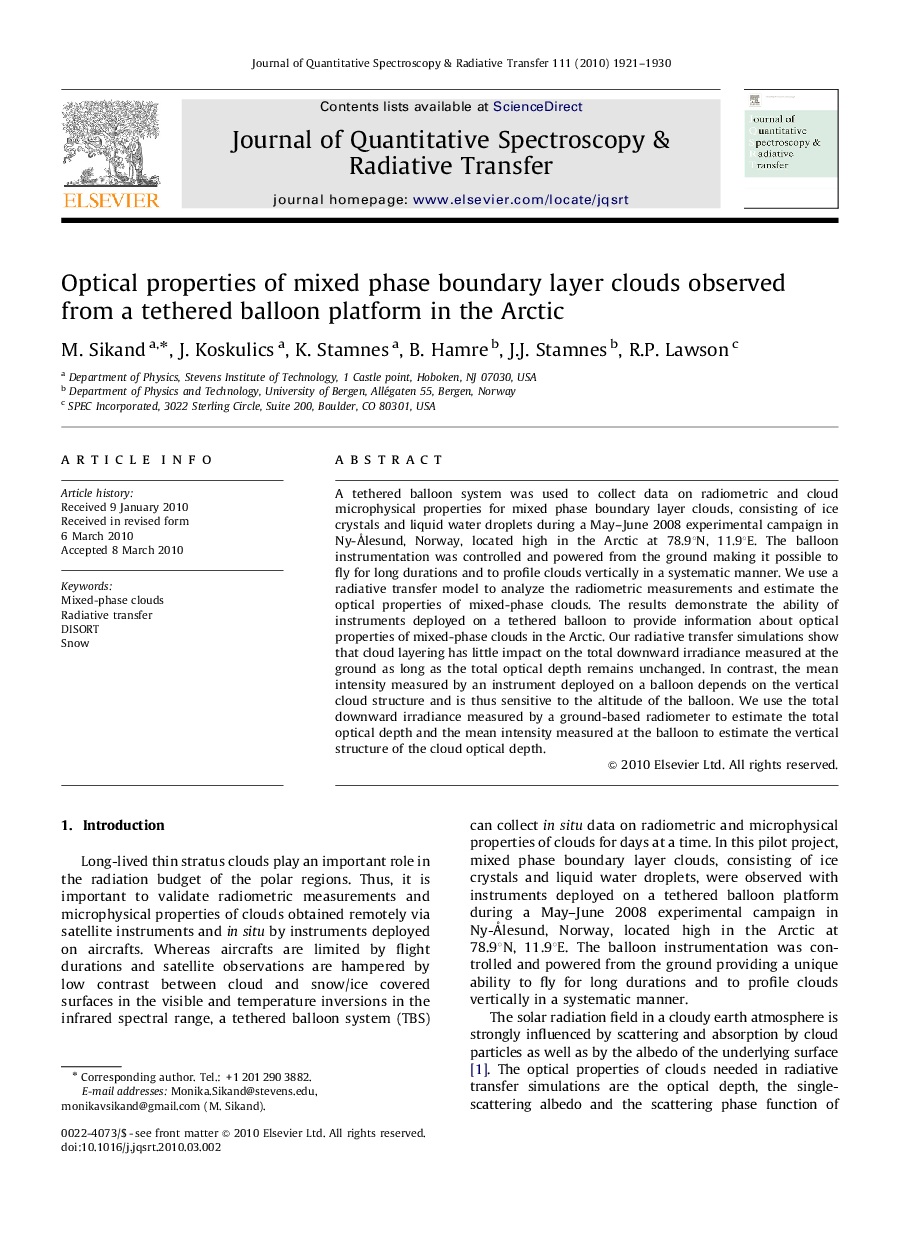| Article ID | Journal | Published Year | Pages | File Type |
|---|---|---|---|---|
| 5429743 | Journal of Quantitative Spectroscopy and Radiative Transfer | 2010 | 10 Pages |
A tethered balloon system was used to collect data on radiometric and cloud microphysical properties for mixed phase boundary layer clouds, consisting of ice crystals and liquid water droplets during a May-June 2008 experimental campaign in Ny-à lesund, Norway, located high in the Arctic at 78.9°N, 11.9°E. The balloon instrumentation was controlled and powered from the ground making it possible to fly for long durations and to profile clouds vertically in a systematic manner. We use a radiative transfer model to analyze the radiometric measurements and estimate the optical properties of mixed-phase clouds. The results demonstrate the ability of instruments deployed on a tethered balloon to provide information about optical properties of mixed-phase clouds in the Arctic. Our radiative transfer simulations show that cloud layering has little impact on the total downward irradiance measured at the ground as long as the total optical depth remains unchanged. In contrast, the mean intensity measured by an instrument deployed on a balloon depends on the vertical cloud structure and is thus sensitive to the altitude of the balloon. We use the total downward irradiance measured by a ground-based radiometer to estimate the total optical depth and the mean intensity measured at the balloon to estimate the vertical structure of the cloud optical depth.
